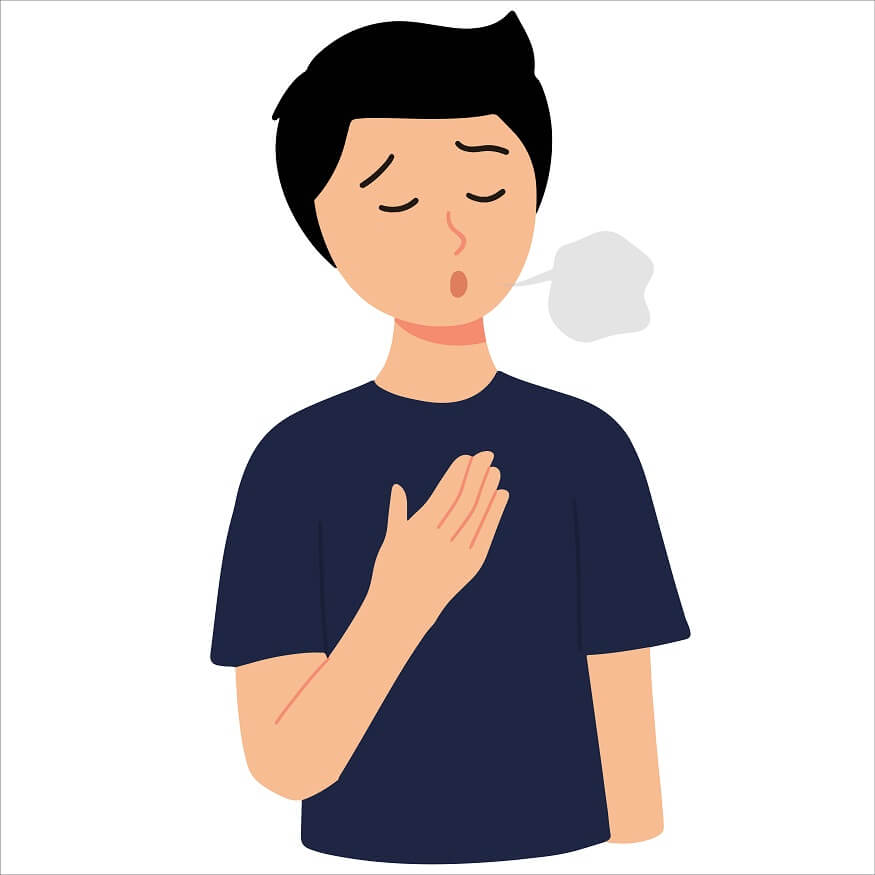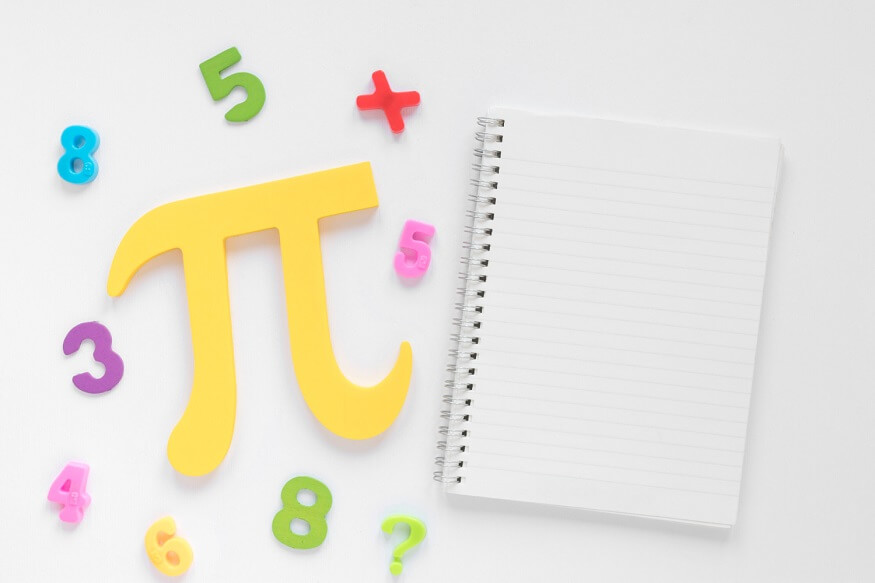The respiratory rate in children, or the frequency of breaths per minute, varies according to the child’s age. It is a critical vital sign that reflects the function of the respiratory system, and any substantial deviations from the normal range can be a crucial sign of illness. Here, we provide an outline of the normal and abnormal respiratory rates for different age groups of children.
Also Read: Iron-Deficiency in children: Causes, Symptoms and Prevention
Respiratory Rate in Children: Age groups
It is an important vital sign that can be used to assess a child’s health. The normal respiratory rate for children varies by age group. Here’s what is the normal respiratory rate for children in different age groups.
Neonates (0 to 28 days old): The respiratory rate for a newborn, or neonate, ranges between 30 to 60 breaths per minute. This rate can sometimes reach up to 70 breaths per minute, depending on activity level or other factors. An abnormally high respiratory rate above these levels could be indicative of conditions such as respiratory distress syndrome, infection, or other neonatal diseases. A significantly lower rate might signal respiratory depression due to causes like opioid exposure or severe infection.
Infants (1 month to 1 year): For infants, a normal respiratory rate is usually between 30 to 40 breaths per minute. Factors such as sleep, feeding, and crying can temporarily affect this rate. However, if the rate persistently exceeds 60 breaths per minute, it may be a cause for concern. Similarly, a rate consistently below 30 breaths per minute should also prompt further investigation.
Toddlers (1 to 3 years): The typical respiratory rate for toddlers ranges from 24 to 40 breaths per minute. Increased rates may be seen during activities or emotional episodes. Nevertheless, persistent rates over 40 breaths per minute or under 20 breaths per minute may suggest an underlying health issue and should be evaluated by a healthcare provider.
Preschoolers (3 to 6 years): In preschool-age children, a normal respiratory rate spans 22 to 34 breaths per minute. During sleep, the rate can drop slightly. If the respiratory rate consistently falls below 20 or exceeds 34 breaths per minute, this should raise concern.
School-age children (6 to 12 years): As children grow older, their respiratory rates decrease. The normal range for this age group is 18 to 30 breaths per minute. Rates below 18 or over 30 breaths per minute should be examined further, unless related to physical exertion or emotional stress.
Adolescents (12 to 18 years): For adolescents, the typical respiratory rate is similar to adults, ranging from 12 to 16 breaths per minute. While it’s normal for the rate to increase during strenuous activity, rates persistently above or below this range warrant medical attention.
Also Read: What is concussion? When can students go back to sports after a concussion?
Causes of fluctuating respiratory rate
A child’s respiratory rate is influenced by various factors, including illness, fever, anxiety, and physical activity. Increases in respiratory rate are often the body’s response to hypoxia (low oxygen levels), hypercapnia (high carbon dioxide levels), or metabolic acidosis. It’s essential to consider these factors when assessing a child’s respiratory rate.
An abnormally high respiratory rate, or tachypnea, may be a sign of several conditions, including respiratory diseases like pneumonia or bronchiolitis, heart failure, sepsis, or metabolic conditions. Likewise, an unusually slow respiratory rate, or bradypnea, can occur with conditions such as hypothermia, drug intoxication, or brain disorders. Any substantial deviation from the normal respiratory rate should be investigated by a healthcare provider to diagnose and treat potential underlying causes.
It’s worth noting that assessing the respiratory rate should not be an isolated evaluation. A holistic examination of a child’s health condition should be performed, including evaluation of the effort and pattern of breathing, use of accessory muscles, presence of retractions or grunting, cyanosis, and general appearance.
The normal respiratory rate in children varies considerably with age. It is crucial to be familiar with the standard ranges for each age group and to seek medical attention if persistent abnormal rates are observed. This knowledge can aid in the early identification and treatment of various health conditions.
Also Read: The Benefits of Mindfulness Education in Schools
How to stabilise child’s respiratory rate
The stabilisation of a child’s respiratory rate depends on identifying and treating the underlying cause of any abnormal rate. It is crucial to provide prompt care and maintain a calm, reassuring environment to reduce anxiety and stress, which can contribute to an increased respiratory rate. Here are some general approaches to stabilise a child’s respiratory rate:
Ensure an Open Airway: The first step in stabilising the respiratory rate is to ensure the child’s airway is open. This can involve positioning the child correctly (for example, in the recovery position), removing any obstructions from the mouth or nose, or providing medical interventions like intubation if needed.
Oxygen Therapy: If a child has a significantly increased respiratory rate or shows signs of respiratory distress, supplemental oxygen may be administered. This helps to increase the oxygen level in the blood, reducing the work of breathing and helping to stabilise the respiratory rate.
Manage Fever: Fever can increase the respiratory rate, so controlling fever with appropriate medications, like paracetamol or ibuprofen, can help stabilise the rate. Always consult a healthcare provider for appropriate dosage and administration.
Fluid Management: Dehydration can lead to an increased respiratory rate. If a child is dehydrated, rehydration with oral fluids or intravenous fluids (if severe) can help to stabilise the respiratory rate.
Treat the Underlying Condition: Conditions such as asthma, pneumonia, or bronchiolitis can increase the respiratory rate. Appropriate medical management of these conditions, such as bronchodilators for asthma or antibiotics for bacterial pneumonia, will help normalise the respiratory rate.
Breathing Exercises: For older children and adolescents, controlled breathing exercises can be beneficial. Techniques like diaphragmatic or “belly” breathing and slow, deep breaths can help to slow and regulate the breathing rate.
Reduce Anxiety: Anxiety or emotional distress can increase the respiratory rate. It’s important to comfort the child and, if appropriate, use distraction techniques to help reduce their anxiety and calm their breathing.
Consult a Healthcare Provider: If you’re concerned about a child’s respiratory rate, it’s essential to seek advice from a healthcare provider. They can assess the child, identify any underlying issues, and provide appropriate treatment.
Also Read: Goal setting for students: Importance, Process and Examples
Any intervention to stabilise a child’s respiratory rate should be done under the guidance of a healthcare provider. If a child’s respiratory rate is persistently abnormal or the child appears unwell, they should be assessed by a healthcare professional promptly.
EuroSchool is committed to the health and well-being of all students. We believe that by working together, they can create a healthy and supportive environment for all students to thrive.











